The Avant-Garde Era – on the road in Czechia
The Iconic Houses Network presents Modernist studios, residential and artists' houses and makes them accessible to the public. On behalf of HOLIDAYARCHITECTURE, Hendrik Bohle attended the conference on the 10th anniversary of the Iconic Houses non profit foundation, which focused particularly on Czech architectural Modernism centred on the master builder, Adolf Loos.
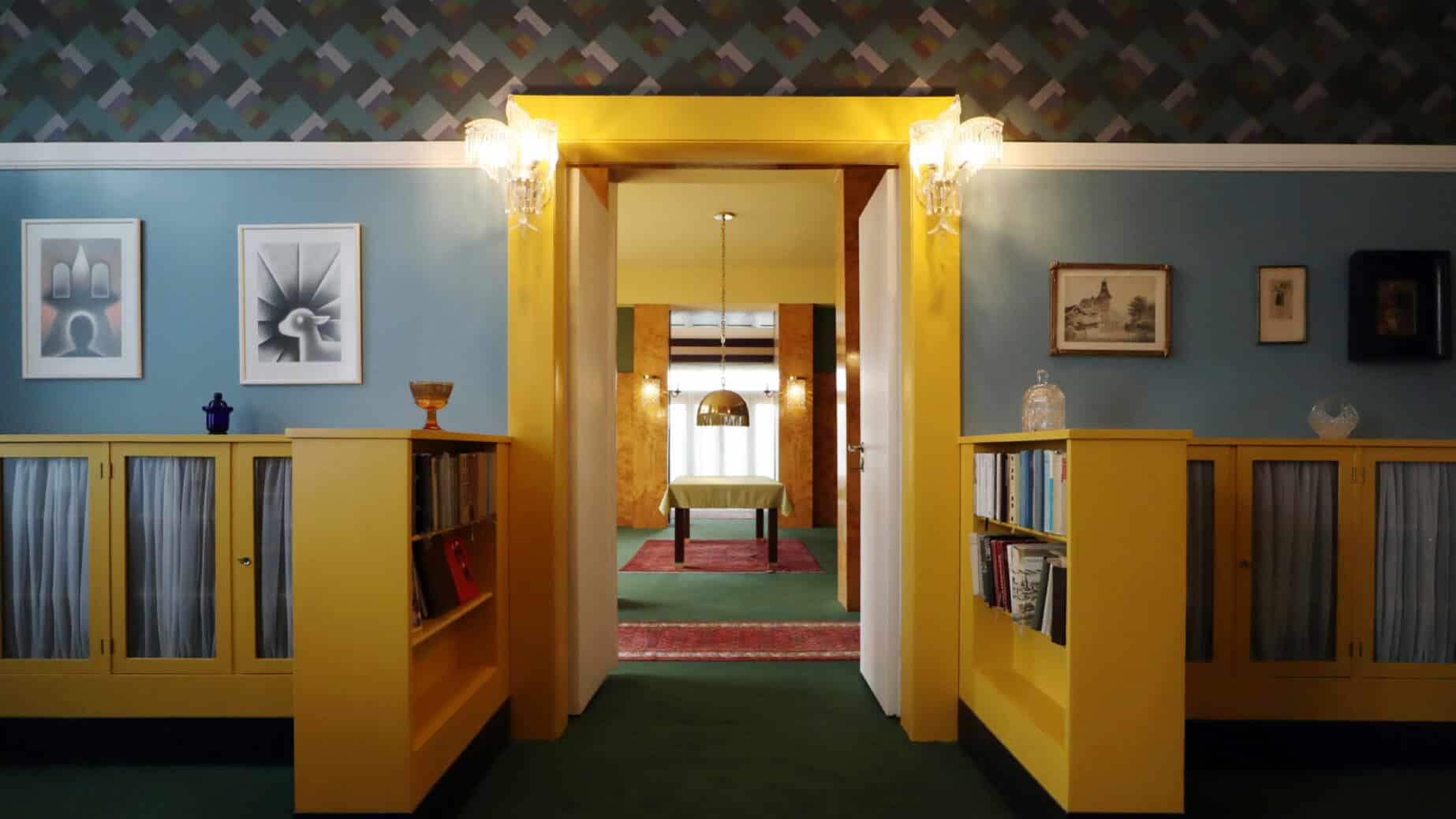
When Iconic Houses went online ten years ago, founder Natascha Drabbe could hardly have imagined that one day there would be an impressive 200 house-museums in her network. Her goal was to make iconic buildings, homes, artists’ houses and studios accessible to visitors and to network them internationally. Since then, the work of the network based in the Netherlands has focused on promoting the architectural heritage of Modernism.
In the Czech Republic, twelve of these buildings can be visited, including apartments and houses designed by Adolf Loos in Prague and Pilsen. These were part of the programme of the “International Iconic Houses Conference”, which also included houses in Brno, Vienna and Ljubljana.
The work of Adolf Loos in Pilsen
The Brno-born architect, publicist and critic, Adolf Loos is considered one of the most important pioneers of modern architecture. He deemed ornamentation to be superfluous, the concept of the total work of art overbearing. His works exude a special sensuality, his use of high-quality materials and their crafting is masterly. He achieved international fame not least because of his Raumplan [lay-out design}: a cleverly conceived system of flowing rooms and mezzanines, with rooms connected to each other by staircases and openings for interior views.


Together with Prague, Pilsen was one of the Czech boomtowns of Modernism. In the home of Urquell and Škoda, Loos received his first commission in 1907. In 1928 he designed an apartment for the Vogl family. Only the living room and dining room remain of the original spacious apartment. For the visitor the tour is adventurous: Between unremarkable office corridors, a door unexpectedly opens into a world of cherry wood veneer and Japanese engraving.
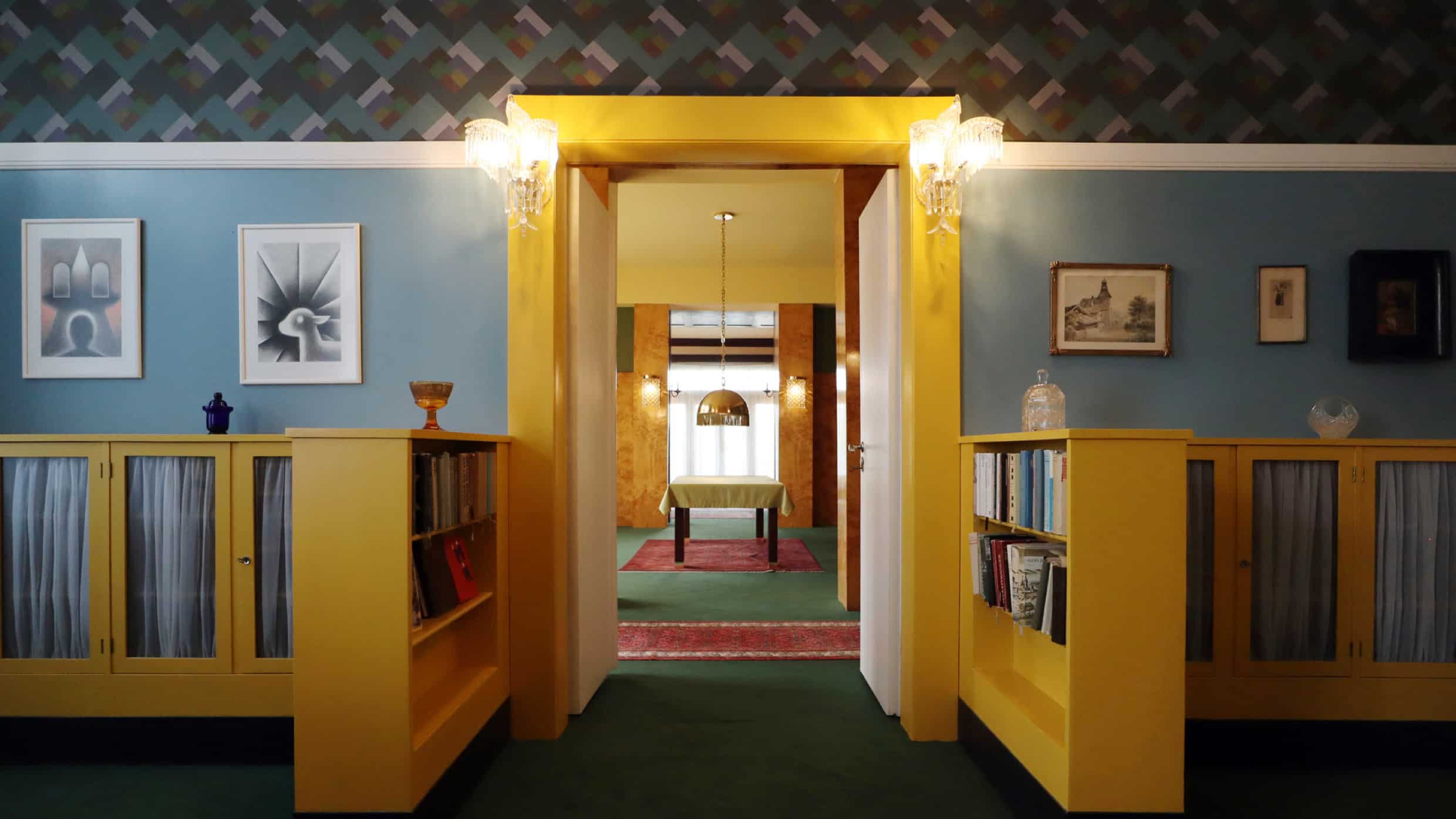
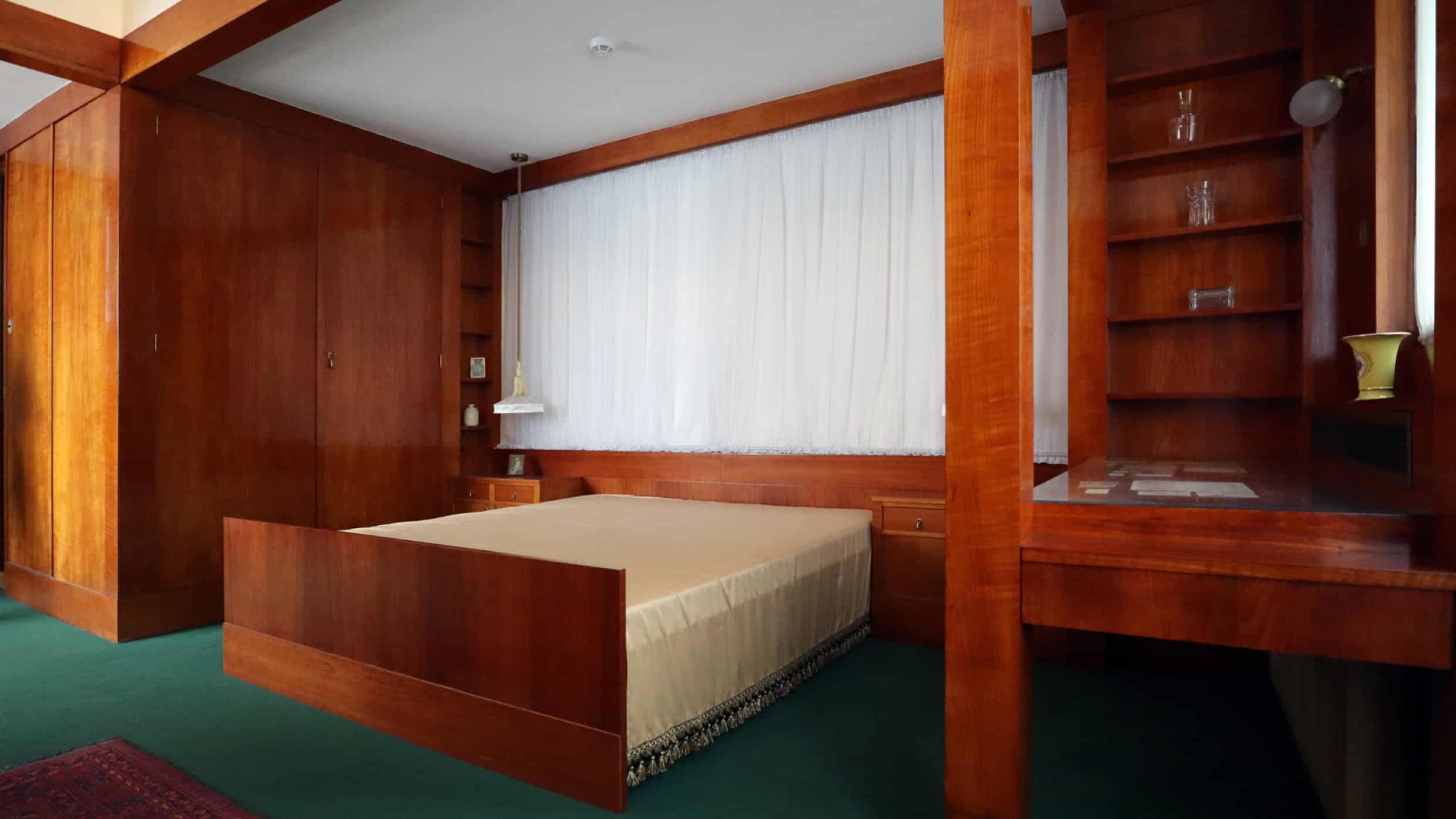

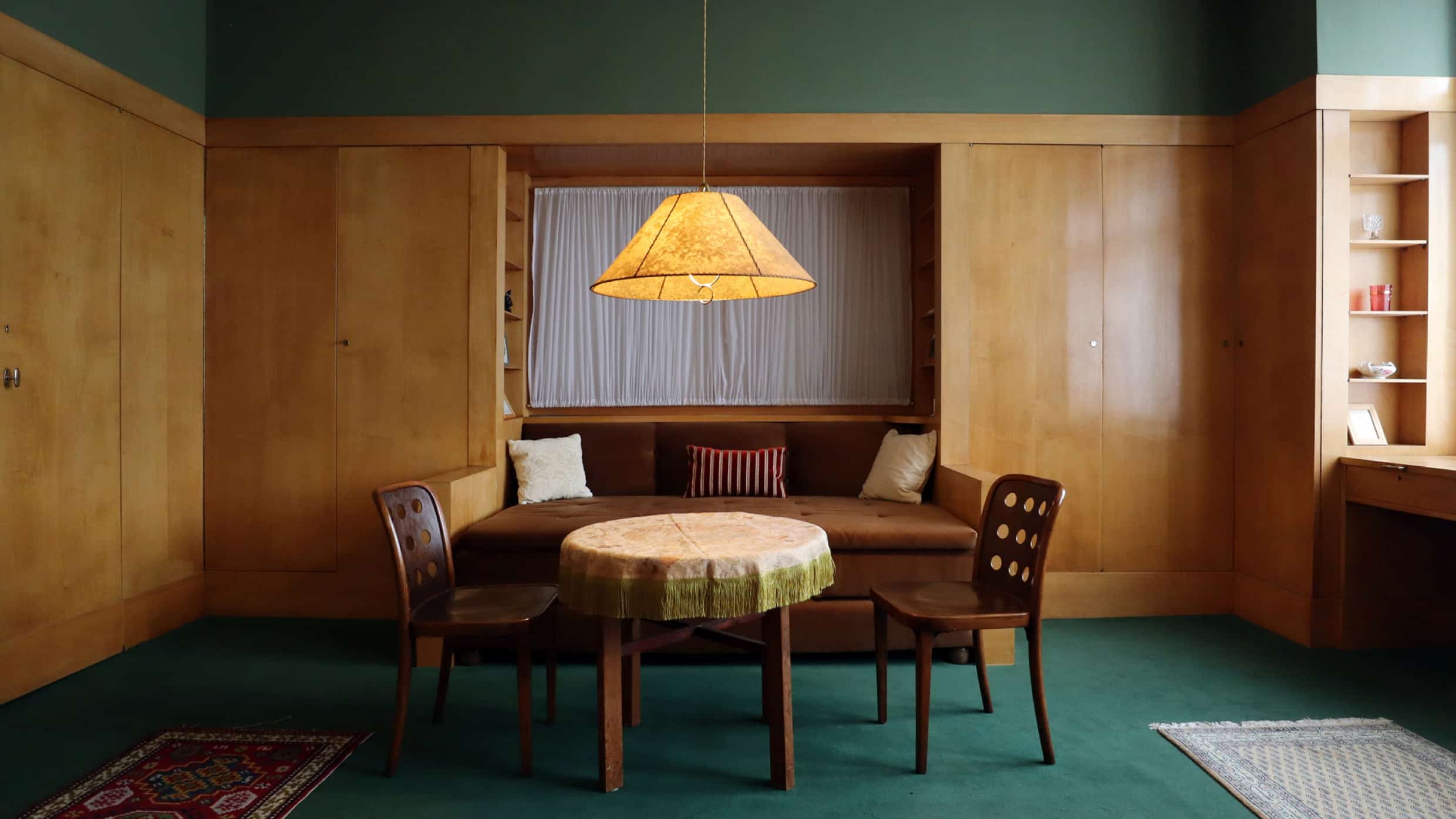
The conversion of a house for Jan and Jana Brummel followed as early as 1929. Loos removed all the decorative features of the late 19th century facade, added an extension and in the interior implemented a sequence of rooms with various atmospheres.
Steven Brummel, one of the builder’s nephews, who was living abroad, saved the house from demolition in 1978. Within six months, the money needed for the purchase was raised in the USA. Extensive restoration followed. Today, the apartment, including the contemporary furniture, is one of Loos’ best-preserved works in Pilsen.
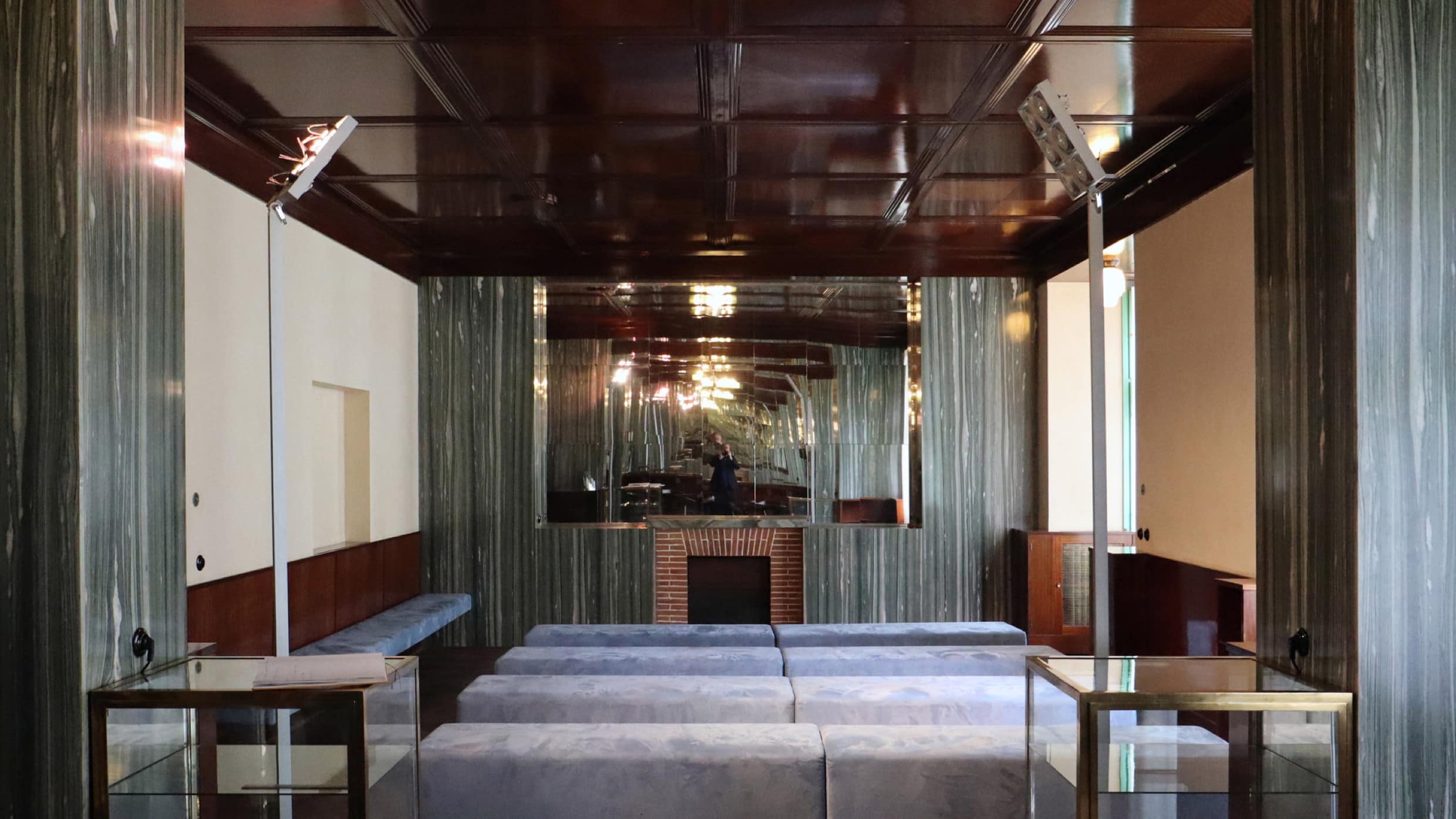
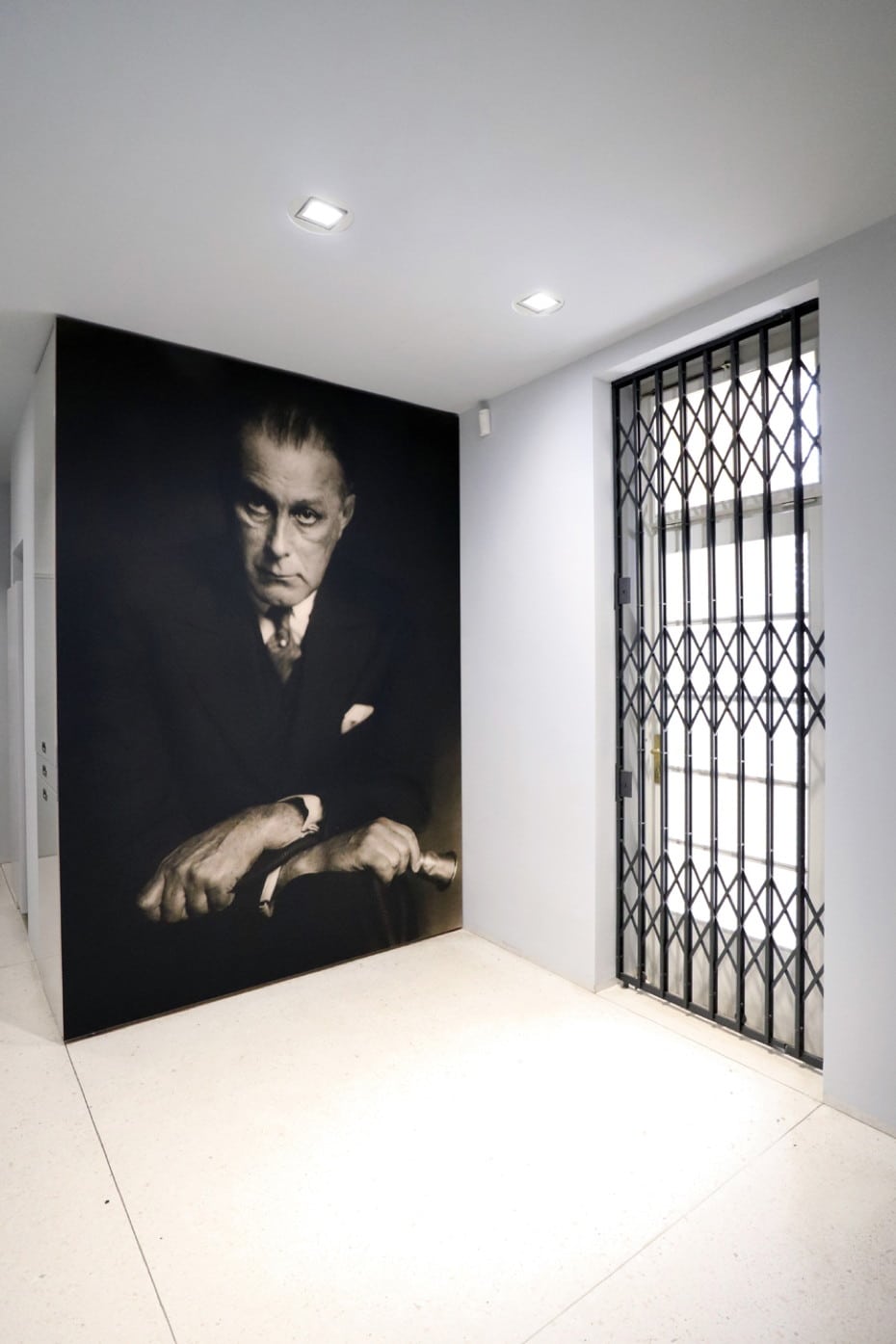
Loos received one commission after the other. In 1931 he designed a magical apartment for Vilém Kraus and his wife. He covered the walls of the dining room with large mirror surfaces facing each other, creating the illusion of an endless sequence of rooms. He covered the remaining walls with green, white-veined Cipollino marble and combined them with built-in furniture and a ceiling of recessed panels in dark brown mahogany.
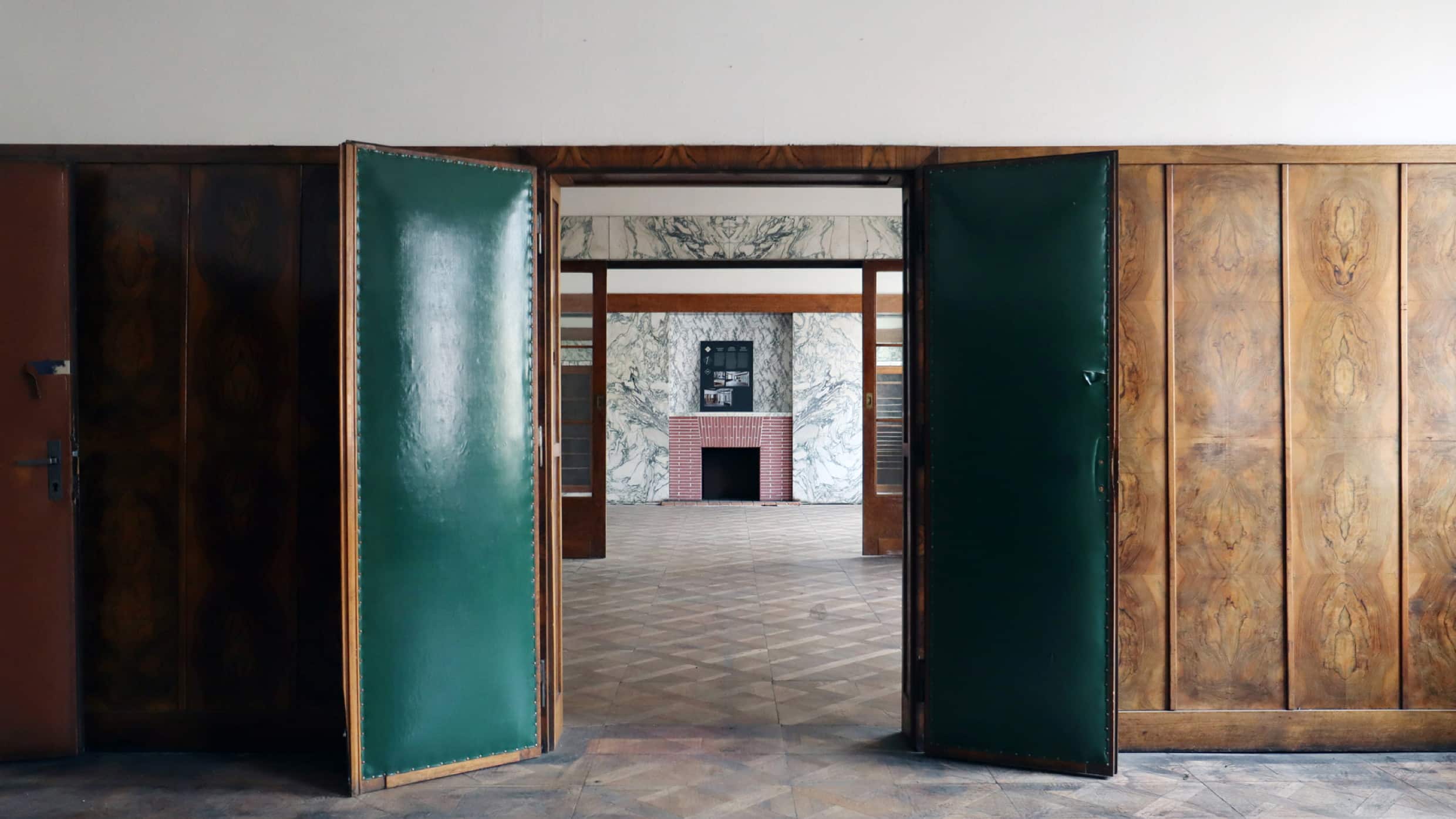
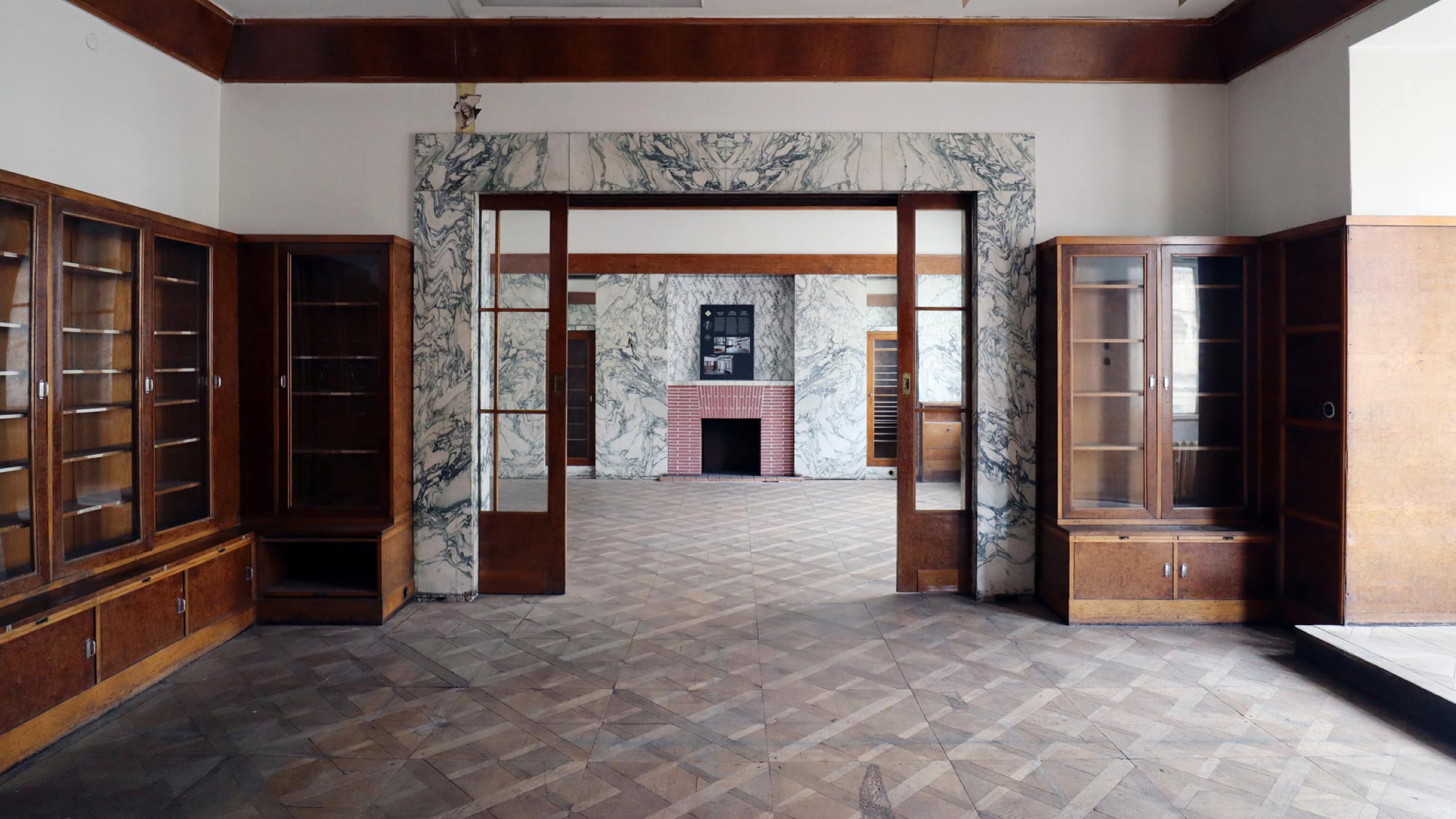
A remarkable living room for Helena and Hugo Semler followed in 1932. Here Loos covered the walls with artfully placed natural stone slabs of Bianco Fantastico. The black grain of the marble creates the impression of fantastical creatures. At the end of the main axis, he positioned a brick fireplace, above which there was originally a mirrored wall surface. An extension of the living room planned by Loos was never carried out.
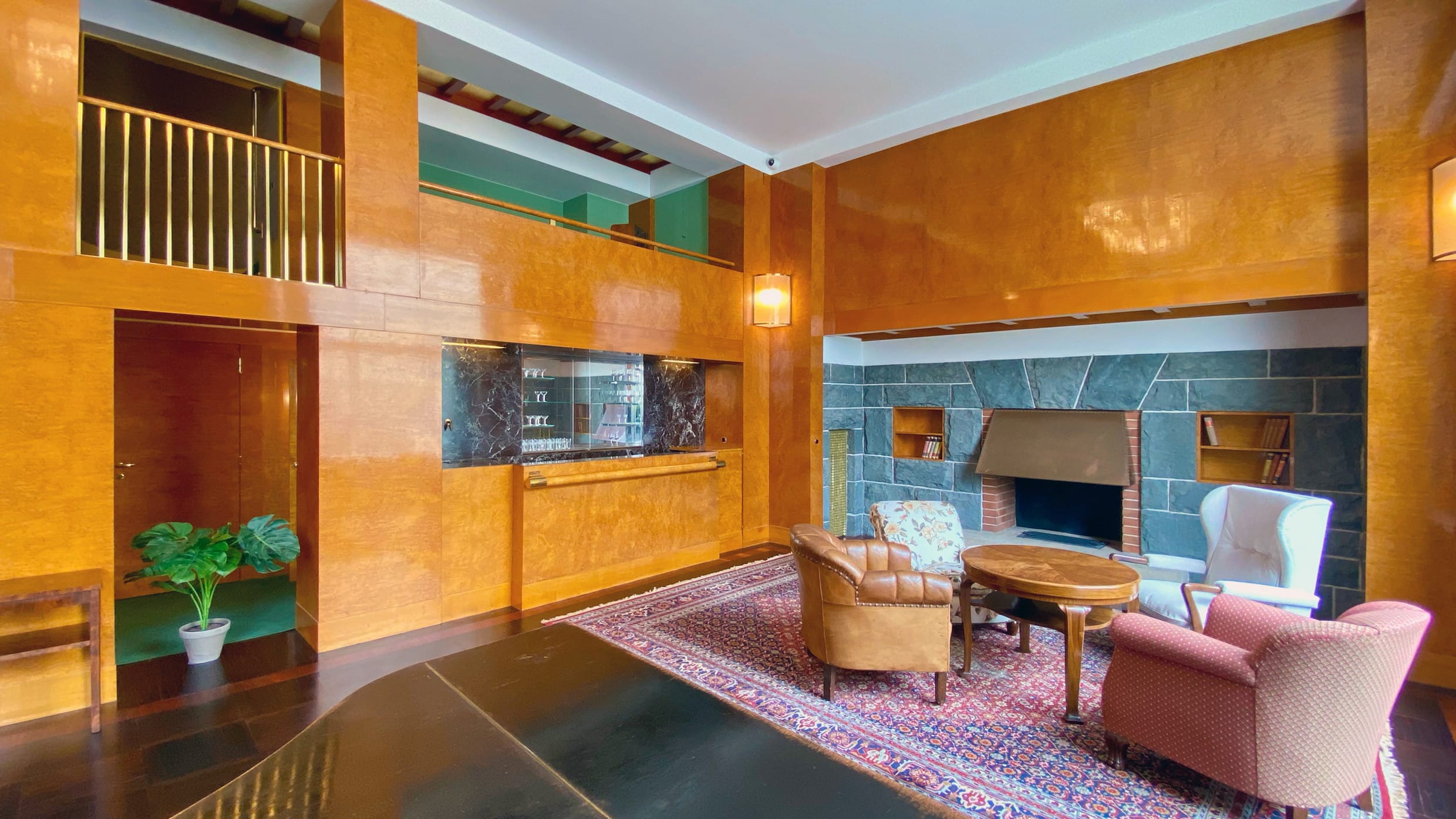
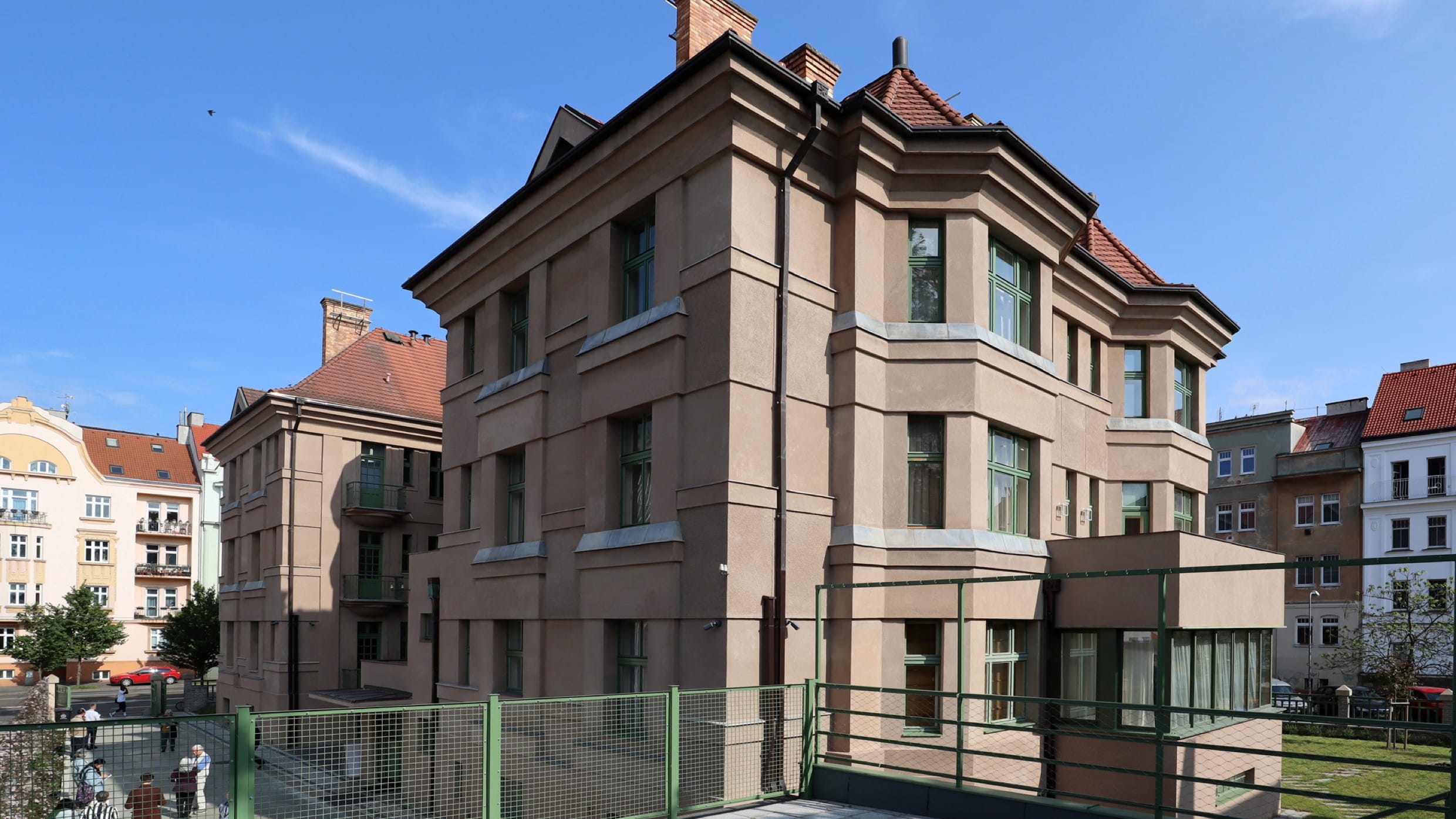
Together with his assistant Heinrich Kulka, Loos designed a very special residence for Semler’s brother, the wealthy metal manufacturer, Oskar Semler and his wife, Jana. It is also the only one of the Pilsen projects in which the so-called Raumplan was implemented. All rooms are cleverly layered over several levels and oriented inwards. After Loos’ death in 1933, Kulka completed the project.
Incidentally, all Pilsen interiors can be explored in a relaxed way during a pre-booked guided walk.
“I am a cosmopolitan, just like every European” – Adolf Loos
Exploration, guided tours and lectures were central elements of the “International Iconic Houses Conference”, attended by supporters, friends and members of the network from all over Europe, the USA and Japan. The compact and informative programme led to houses, studios and housing estates that are witnesses to the bright as well as dark history of 20th century Europe. This was also commemorated at the conference. For many builders and clients, the Golden Avant-garde Era ended abruptly. They were dispossessed, deported and murdered by the Nazis. The few survivors lost their property to the new rulers, the Soviets. Many went into exile, but the houses remained. They fell into disrepair, were forgotten and then rediscovered decades later. Today they are revived icons and represent a facet of Europe that Adolf Loos defined thus: “I am a cosmopolitan, just like every European.”
Author: Hendrik Bohle, thelink.berlin
Images (all): © Hendrik Bohle, thelink.berlin
Note: If you are interested, holiday architecture in the Classic Modernism style can be found here.
Author info:
Architect Hendrik Bohle runs a digital magazine on building culture together with journalist Jan Dimog. On thelink.berlin they have been telling about their discoveries in Europe for years, especially about the connections between people and architecture.
When they are not on the road, they curate high-profile exhibitions, such as the travelling exhibition on Arne Jacobsen’s architecture.
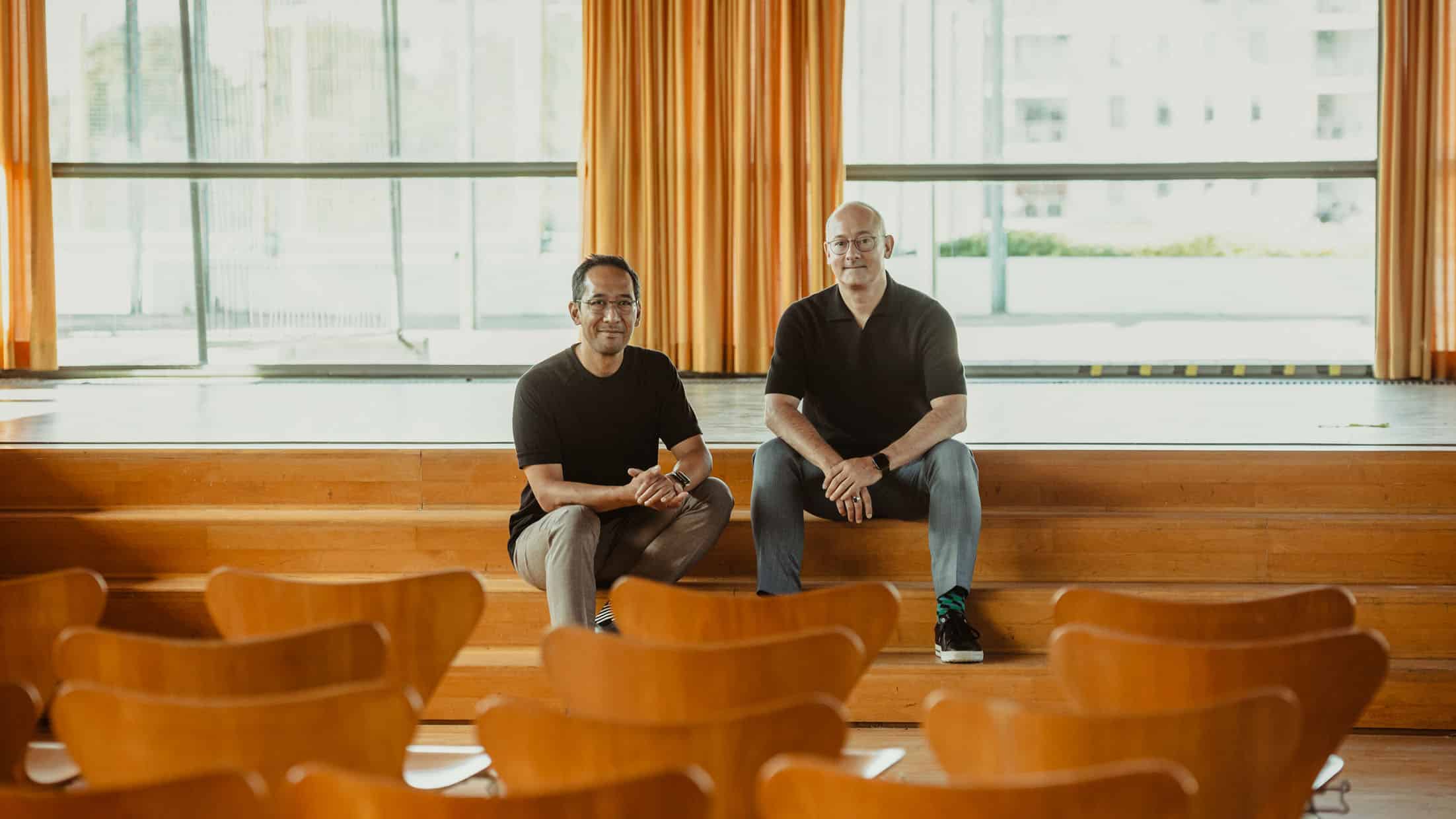





2 Comments
Adolf Loos mag ein genialer Architekt gewesen sein, aber er war auch ein "Pädophiler", der sein Ansehen und seine Kontakte dazu missbraucht hat, minderjährige Kinder im Grichtsprozess, in dem er auch verurteilt wurde, zu diskreditieren. Ich werde mir kein Adolf Loos Haus mehr ansehen.
—
<em>Ein genialer Architekt mit großem Einfluss auf die Bauwelt und zugleich einer mit Abgründen, auf die Sie zurecht hinweisen. Beides gehört zu Loos und beides ist ein Thema.
Hendrik Bohle, thelink.berlin</em>
Anmerkungen der UA Redaktion:
Weitere Informationen zum angesprochenen Thema finden Sie z.B. hier:
Podcast der ZEIT -> https://www.zeit.de/gesellschaft/2020-09/architektur-adolf-loos-paedophilie-verbrechen-podcast
die Presse, Wien -> https://www.diepresse.com/4655244/loos-der-paedophile-straftaeter-was-die-protokolle-verraten
Interessant und tolle Bilder!